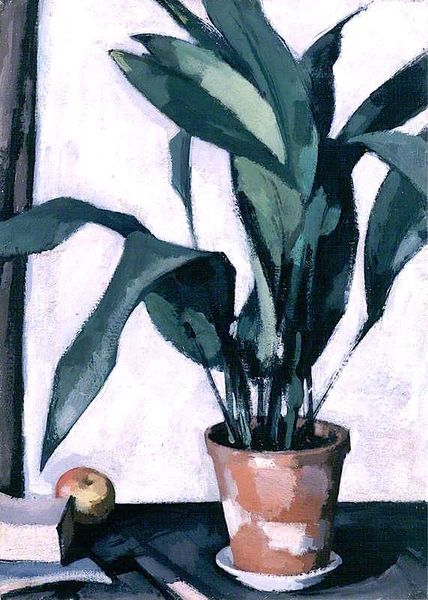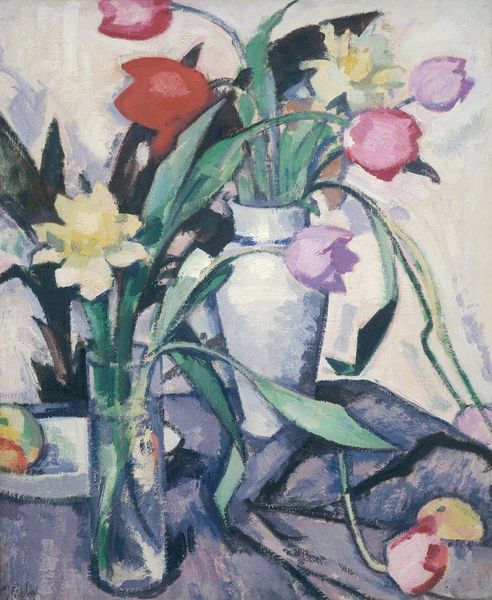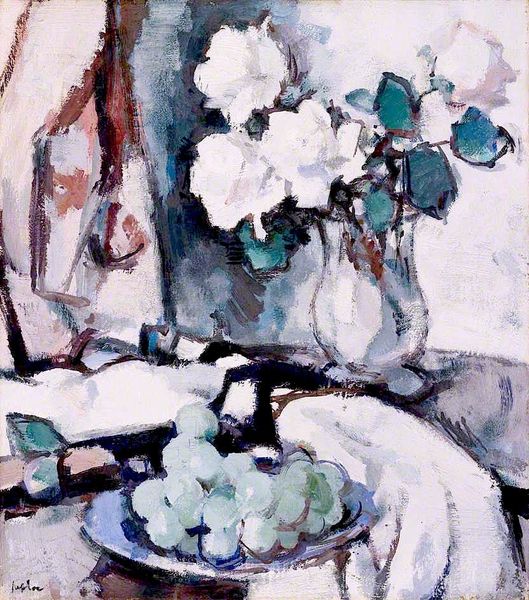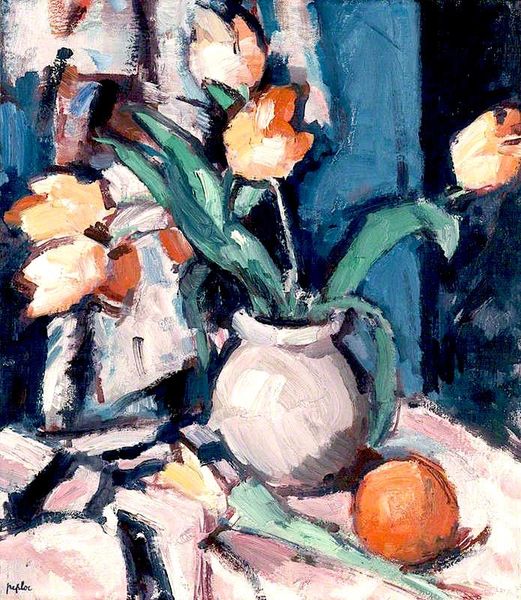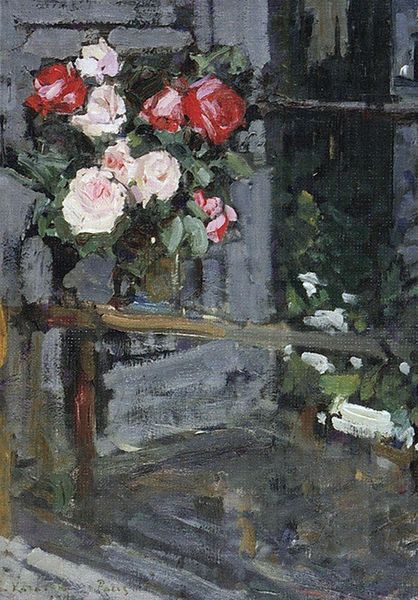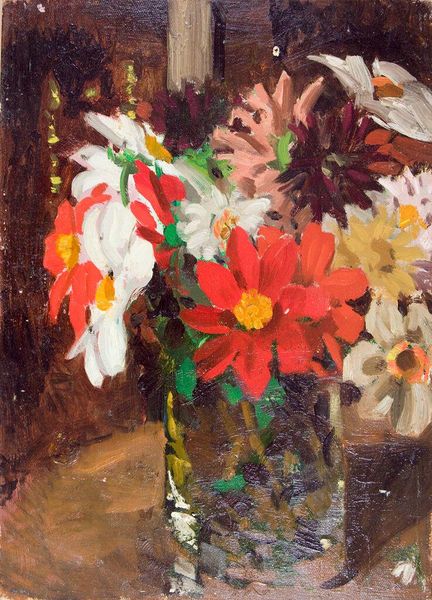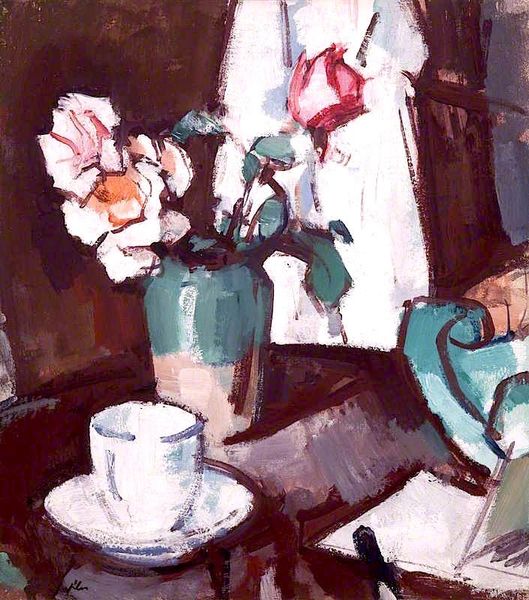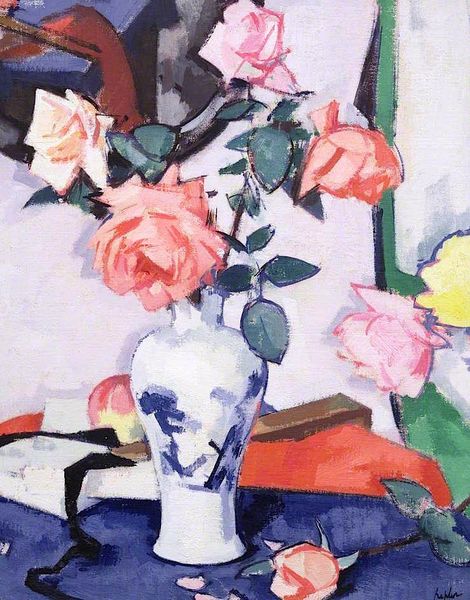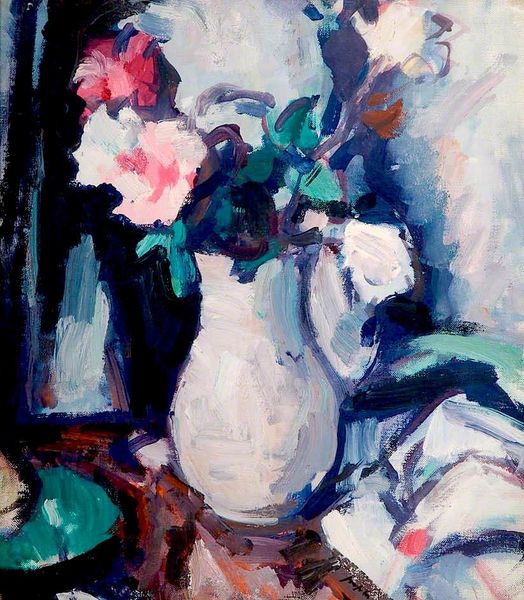
painting, oil-paint, impasto
#
painting
#
oil-paint
#
flower
#
oil painting
#
impasto
#
plant
#
post-impressionism
Copyright: Public domain
Curator: Samuel Peploe's "Lilies," executed with oil paint, immediately presents itself as a study in contrasts and light. Editor: Yes, there’s something serene yet almost severe about it. The stark white lilies against the muted backdrop create this… weighty silence. Is that the impasto technique giving it so much presence? Curator: Precisely! The impasto contributes not just to the physical texture but also to the symbolic weight. Lilies have been associated with purity and resurrection throughout history. Given Peploe's engagement with Post-Impressionism, are we seeing a nod toward something beyond the mere depiction of a floral arrangement? Editor: I wonder, though, how much the lilies are a subject, and how much they are objects on which to explore the material possibilities of paint itself? Look at the way the light hits the petals, those thick dabs – are they brushstrokes first and foremost? Is it really about representing the lilies’ conventional meaning? Curator: The very visible brushwork pulls us back to the artist’s hand, you're right. But the choice to depict lilies specifically isn't arbitrary. The symbolism is part of the painting’s history and impacts our perception whether we're conscious of it or not. These flowers, especially in a stark palette like this, bring notions of mortality and grace. Editor: Perhaps Peploe's more interested in exploring how such conventional beauty can be built up – or even deconstructed – through physical actions. We are also looking at something reproducible: oil paintings became affordable at a certain moment in time and shaped consumption around representations, including still lifes. Curator: True, but let’s not forget the psychological depth conveyed here, playing on layers of associations, memories and long-standing significations. Editor: Alright, point taken! It does ask a lot of you to ponder such things through a flower, doesn't it? Curator: Absolutely. These dialogues help us enrich that pondering. Editor: Right. They pull in threads from the history of objects and meaning of stuff, and remind us these still lifes live on!
Comments
No comments
Be the first to comment and join the conversation on the ultimate creative platform.



